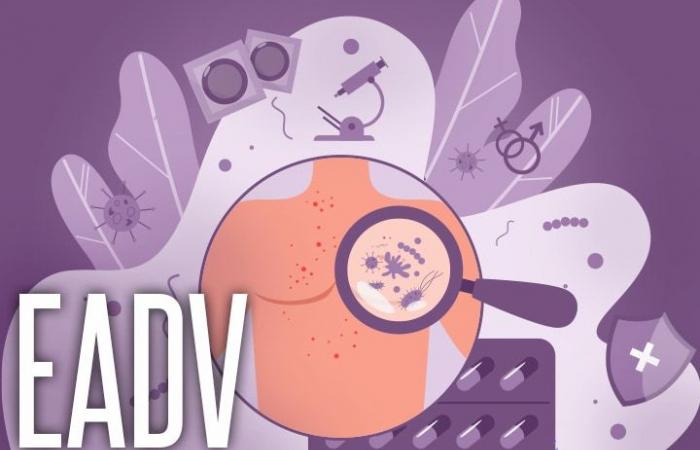Approximately 5% of patients with pernio or chilblains had “long-distance” toe symptoms that lasted 60 days or more. In two cases, toe symptoms lasted 4 to 5 months. Some patients also had symptoms commonly associated with COVID-19, such as persistent dry cough or fever, others had dermatologically dominant symptoms, especially those patients whose skin symptoms persisted beyond the usual symptomatic phase.
Certain other dermatological manifestations of COVID-19 lasted a month or more in at least one case, Dr. Esther Freeman of Massachusetts General Hospital in Boston during the European Academy of Dermatology and Venereology (EADV) virtual convention.
“There is a subset of patients with skin manifestations of COVID who have long-distance or long-term COVID symptoms,” Freeman said. “This is particularly noticeable in Pernio or chilblains, and we believe this phenomenon is actually underreported in the registry, perhaps even more frequently than we see it in these data.”
In response to a question, Freeman replied that so far only limited correlative data had been collected in order to make definitive statements about the connection between long-distance dermatological symptoms and other COVID-19 symptoms. Persistent pain and discomfort associated with Pernio also seem unusual.
“I think we need to reassure most of our patients who are developing pernio or chilblains as part of COVID-19,” she added. “Both in the registry and in my personal patient group, the symptoms disappeared after a mean duration of 15 days. I think this is an underrepresentation as we’ve seen a lot of our patients going on for 4 and 6 weeks. But for most of our patients, the pain and discomfort only last about a week. ”
Discoloration of the toes associated with Pernio has not been associated with necrosis or other underlying tissue damage, Freeman said MedPage today by email. Although pernio / chilblains are more commonly associated with the common cold, the condition is different from frostbite, which can lead to burns, she noted.
The results come from the COVID-19 International Dermatology Registry, hosted by the American Academy of Dermatology. The register, which was founded at the beginning of April with the support of the International League of Dermatologic Societies, has collected data on more than 1,000 patients from 41 countries. About 30% of the cases collected so far have laboratory confirmation of COVID-19. Freeman and colleagues recently reported results for the first 716 patients added to the registry.
The EADV presentation focused on 224 patients (90 with laboratory confirmation of COVID-19) whose doctors provided information about the duration of dermatological symptoms. The cohort consisted of 98 patients with Pernio, 29 with morbilliform rash, 28 with urticaria, 25 with macular erythema, 20 with vesicular eruptions, 20 with papulosquamous eruptions and three with retiform purpura.
The median duration for all symptoms was 12 days and 7 days for the laboratory-confirmed disease subgroup. The median duration ranged from 5 days for urticaria to 20 days for papulosquamous eruptions and retiform purpura.
The Pernio subgroup had the most runaways or long-distance riders as five of the 98 had toe symptoms that lasted 60 days or more, compared to one each in the vesicular and papulosquamous eruption subgroups. The patients with morbilliform rash had a mean duration of 7 days, and two of 29 patients had symptoms that lasted for about 30 days. Urticaria lasted 5 days and one patient had the symptom for 30 days. In general, laboratory confirmation was associated with shorter symptom duration, with the exception of papulosquamous eruptions, which had a mean duration of 20 days.
Freeman described the clinical course of a long-distance Pernio rider whose toe symptoms persisted after 133 days. The patient initially complained of fatigue and cough, and the occurrence of pernio with erythema and pain was reported on day 7. The laboratory results confirmed COVID-19 on day 24 after previous negative tests, and the Pernio had worsened. On day 41 the patient tested positive again and had persistent fatigue. At the last check-up, the patient’s tiredness had improved, but the pernio persisted.
As of the summer, published reports documented patients with months of duration of COVID-19 symptoms, including fatigue, neurological symptoms, and cardiac symptoms, Freeman said. Whether this also applies to cutaneous manifestations of the disease has been unclear and the registration data has provided evidence that some patients have long-range dermatological symptoms.
“Nine months after the outbreak of the COVID-19 pandemic, ongoing morbidity beyond the acute phase of the disease is increasingly recognized,” concluded Freeman. “Urticaria and morbilliform eruptions were of relatively short duration, while pernio / frostbite and papulosquamous eruptions lasted longer.”
Disclosure
Freeman has no relevant industry ties.
These were the details of the news Add skin conditions to the COVID-19 long-range effects for this day. We hope that we have succeeded by giving you the full details and information. To follow all our news, you can subscribe to the alerts system or to one of our different systems to provide you with all that is new.
It is also worth noting that the original news has been published and is available at de24.news and the editorial team at AlKhaleej Today has confirmed it and it has been modified, and it may have been completely transferred or quoted from it and you can read and follow this news from its main source.

